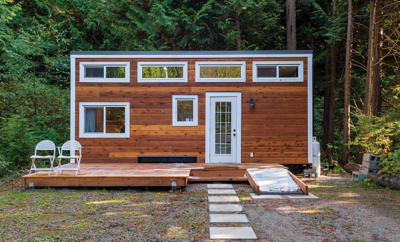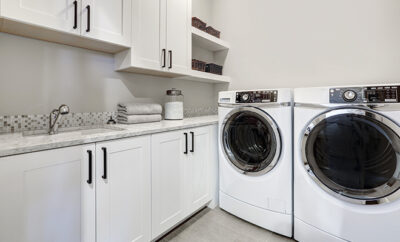
Home Shared Home: The Multigenerational Housing Trend
One of today’s hottest real estate trends is housing for extended families who want to live under the same roof. According to the U.S. Census Bureau, a record 60 million Americans were part of a household that included three or more generations in 2014. This represents 19 percent of the population, up from 12 percent of Americans living with multiple generations in 1980.
There’s nothing new about multigenerational housing. It’s the way that most people lived throughout history and it’s still the norm in countries around the world. Many Hispanic and Asian immigrants continue the practice when they move here, which is why immigration is cited as one reason for the increase in multigenerational households. For other families, multigenerational housing is based on financial necessity due to job loss, student loans or the high cost of housing. Another factor contributing to the growth of this trend is the wave of retiring Baby Boomers who are looking for new housing options. Instead of downsizing, many are moving to larger homes shared with children and grandchildren.
John L. Graham, a business professor at the University of California, has studied and written about the multigenerational housing trend. He sees it as a return to interdependence among members of extended families. “This is the way people have always lived around the world,” he said in a recent New York Times interview. He goes on to list the substantial economic benefits of shared housing, including reduced child-care and elder-care costs. Travel costs can also be reduced when family members live together. Then there are the intangible benefits of multigenerational homes. Living with extended family is a positive experience for many people, with grandparents and grandchildren forming closer relationships and parents feeling better about the safety of grandparents.
Homebuilders are paying attention to the demand for multigenerational housing and they’re responding with floor plans designed for extended families. This means houses that aren’t just bigger. When several generations of a family are living together, how the space is laid out is just as important as the amount of space available. In addition to providing shared common areas, allowing each generation to have privacy and their own space within the home can help ease intergenerational friction.
Lennar, a Miami-based homebuilder, introduced NextGen homes in 2011 to meet the needs of multigenerational households. The Los Angeles Times recently featured a profile of a NextGen home in the Inland Empire area. A family of six that spans three generations lives in a 3,700-square-foot house, with the grandmother and aunt occupying a ground floor suite with a kitchenette and private entrance and her daughter’s family of four living in a three-bedroom upper unit. The entire family shares the living room, dining room and main kitchen. Lennar calls this type of design a “home within a home,” with a design that supports togetherness as well as providing privacy when desired.
There are now dozens of NextGen home models ranging in price from around $200,000 to $1 million or more, depending on design and location, and NextGen homes can be found in 19 states across the nation. Other builders such as Toll Brothers have also jumped on the multigenerational bandwagon. They’re providing options that make homes more livable for extended families, including first-floor suites with separate entrances and private kitchens for older generations and shared living areas for the entire family. Many builders also incorporate patios, balconies and courtyards that provide additional private space for different generations. Some multigenerational homes also include separate laundry rooms and garages.
Among upscale homebuilders, multigenerational housing often takes the form of separate structures for different family members. The Lambert Ranch development in Irvine, California, includes 4,800-square-foot 6-bedroom models with 900-square-foot guest houses that are separated from the main house but integrated into the overall estate. These “estate compounds” only work in areas with plenty of land for new home building. If the multigenerational housing trend continues, a future challenge for builders is to create smaller multigenerational homes for urban areas where land prices are higher. One solution is to build a private bedroom suite above the garage, adding square feet to a home without increasing its footprint.
The unique design of multigenerational homes does not affect their resale value, according to homebuilders. The extra space and privacy they provide can be used for a variety of purposes besides living quarters for family members, including guest rooms, workout rooms and, in some cases, rental units that provide extra income.
If your extended family is interested in buying a multigenerational home, be sure to find a Realtor who has the knowledge and experience to help you plan for your family’s current requirements as well as your future needs. ■
Sources: census.gov, cnbc.com, latimes.com, nytimes.com and pewresearch.org.







